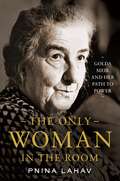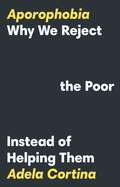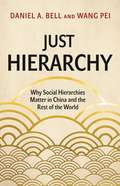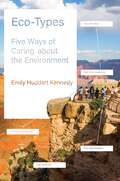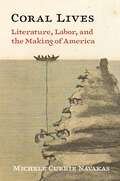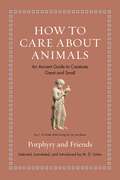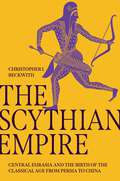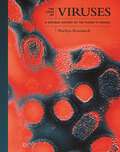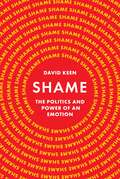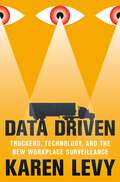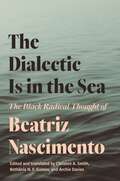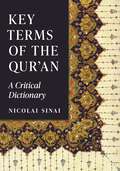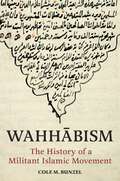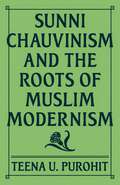- Table View
- List View
The Only Woman in the Room: Golda Meir and Her Path to Power
by Pnina LahavA feminist biography of the only woman to become prime minister of IsraelIn this authoritative and empathetic biography, Pnina Lahav reexamines the life of Golda Meir (1898–1978) through a feminist lens, focusing on her recurring role as a woman standing alone among men. The Only Woman in the Room is the first book to contend with Meir’s full identity as a woman, Jew, Zionist leader, and one of the founders of Israel, providing a richer portrait of her persona and legacy.Meir, Lahav shows, deftly deflected misogyny as she traveled the path to becoming Israel’s fourth, and only female, prime minister, from 1969 to 1974. Lahav revisits the youthful encounters that forged Meir’s passion for socialist Zionism and reassesses her decision to separate from her husband and leave her children in the care of others. Enduring humiliation and derision from her colleagues, Meir nevertheless led in establishing Israel as a welfare state where social security, workers’ rights, and maternity leave became law. Lahav looks at the challenges that beset Meir’s premiership, particularly the disastrous Yom Kippur War, which led to her resignation and withdrawal from politics, as well as Meir’s bitter duel with feminist and civil rights leader Shulamit Aloni, Meir’s complex relationship with the Israeli and American feminist movements, and the politics that led her to distance herself from feminism altogether.Exploring the tensions between Meir’s personal and political identities, The Only Woman in the Room provides a groundbreaking new account of Meir’s life while also illuminating the difficulties all women face as they try to ascend in male-dominated fields.
The Only Woman in the Room: Golda Meir and Her Path to Power
by Pnina LahavA feminist biography of the only woman to become prime minister of IsraelIn this authoritative and empathetic biography, Pnina Lahav reexamines the life of Golda Meir (1898–1978) through a feminist lens, focusing on her recurring role as a woman standing alone among men. The Only Woman in the Room is the first book to contend with Meir’s full identity as a woman, Jew, Zionist leader, and one of the founders of Israel, providing a richer portrait of her persona and legacy.Meir, Lahav shows, deftly deflected misogyny as she traveled the path to becoming Israel’s fourth, and only female, prime minister, from 1969 to 1974. Lahav revisits the youthful encounters that forged Meir’s passion for socialist Zionism and reassesses her decision to separate from her husband and leave her children in the care of others. Enduring humiliation and derision from her colleagues, Meir nevertheless led in establishing Israel as a welfare state where social security, workers’ rights, and maternity leave became law. Lahav looks at the challenges that beset Meir’s premiership, particularly the disastrous Yom Kippur War, which led to her resignation and withdrawal from politics, as well as Meir’s bitter duel with feminist and civil rights leader Shulamit Aloni, Meir’s complex relationship with the Israeli and American feminist movements, and the politics that led her to distance herself from feminism altogether.Exploring the tensions between Meir’s personal and political identities, The Only Woman in the Room provides a groundbreaking new account of Meir’s life while also illuminating the difficulties all women face as they try to ascend in male-dominated fields.
Aporophobia: Why We Reject the Poor Instead of Helping Them
by Professor Adela CortinaWhy “aporophobia”—rejection of the poor—is one of the most serious problems facing the world today, and how we can fight itIn this revelatory book, acclaimed political philosopher Adela Cortina makes an unprecedented assertion: the biggest problem facing the world today is the rejection of poor people. Because we can’t recognize something we can’t name, she proposes the term “aporophobia” for the pervasive exclusion, stigmatization, and humiliation of the poor, which cuts across xenophobia, racism, antisemitism, and other prejudices. Passionate and powerful, Aporophobia examines where this nearly invisible daily attack on poor people comes from, why it is so harmful, and how we can fight it.Aporophobia traces this universal prejudice’s neurological and social origins and its wide-ranging, pernicious consequences, from unnoticed hate crimes to aporophobia’s threat to democracy. It sheds new light on today’s rampant anti-immigrant feeling, which Cortina argues is better understood as aporophobia than xenophobia. We reject migrants not because of their origin, race, or ethnicity but because they seem to bring problems while offering nothing of value. And this is unforgivable in societies that enshrine economic exchange as the supreme value while forgetting that we can’t create communities worth living in without dignity, generosity, and compassion for all. Yet there is hope, and Cortina explains how we can overcome the moral, social, and political disaster of aporophobia through education and democratic institutions, and how poverty itself can be eradicated if we choose.In a world of migrant crises and economic inequality, Aporophobia is essential for understanding and confronting one of the most serious problems of the twenty-first century.
Just Hierarchy: Why Social Hierarchies Matter in China and the Rest of the World
by Daniel A. BellA trenchant defense of hierarchy in different spheres of our lives, from the personal to the politicalAll complex and large-scale societies are organized along certain hierarchies, but the concept of hierarchy has become almost taboo in the modern world. Just Hierarchy contends that this stigma is a mistake. In fact, as Daniel Bell and Wang Pei show, it is neither possible nor advisable to do away with social hierarchies. Drawing their arguments from Chinese thought and culture as well as other philosophies and traditions, Bell and Wang ask which forms of hierarchy are justified and how these can serve morally desirable goals. They look at ways of promoting just forms of hierarchy while minimizing the influence of unjust ones, such as those based on race, sex, or caste.Which hierarchical relations are morally justified and why? Bell and Wang argue that it depends on the nature of the social relation and context. Different hierarchical principles ought to govern different kinds of social relations: what justifies hierarchy among intimates is different from what justifies hierarchy among citizens, countries, humans and animals, and humans and intelligent machines. Morally justified hierarchies can and should govern different spheres of our social lives, though these will be very different from the unjust hierarchies that have governed us in the past.A vigorous, systematic defense of hierarchy in the modern world, Just Hierarchy examines how hierarchical social relations can have a useful purpose, not only in personal domains but also in larger political realms.
Just Hierarchy: Why Social Hierarchies Matter in China and the Rest of the World
by Daniel A. BellA trenchant defense of hierarchy in different spheres of our lives, from the personal to the politicalAll complex and large-scale societies are organized along certain hierarchies, but the concept of hierarchy has become almost taboo in the modern world. Just Hierarchy contends that this stigma is a mistake. In fact, as Daniel Bell and Wang Pei show, it is neither possible nor advisable to do away with social hierarchies. Drawing their arguments from Chinese thought and culture as well as other philosophies and traditions, Bell and Wang ask which forms of hierarchy are justified and how these can serve morally desirable goals. They look at ways of promoting just forms of hierarchy while minimizing the influence of unjust ones, such as those based on race, sex, or caste.Which hierarchical relations are morally justified and why? Bell and Wang argue that it depends on the nature of the social relation and context. Different hierarchical principles ought to govern different kinds of social relations: what justifies hierarchy among intimates is different from what justifies hierarchy among citizens, countries, humans and animals, and humans and intelligent machines. Morally justified hierarchies can and should govern different spheres of our social lives, though these will be very different from the unjust hierarchies that have governed us in the past.A vigorous, systematic defense of hierarchy in the modern world, Just Hierarchy examines how hierarchical social relations can have a useful purpose, not only in personal domains but also in larger political realms.
Eco-Types: Five Ways of Caring about the Environment
by Emily Huddart KennedyWhy acknowledging diverse eco-social relationships can help us overcome the political polarization that undermines our ability to protect the environmentWhen we picture the ideal environmentalist, we likely have in mind someone who dedicates herself to reducing her own environmental footprint through individual choices about consumption—driving a fuel-efficient car, for example, or eating less meat, or refusing plastic straws. This is a benchmark that many aspire to—and many others reject. In Eco-Types, Emily Huddart Kennedy shows that there is more than one way to care about the environment, outlining a spectrum of eco-social relationships that range from engagement to indifference.Drawing on three years of interviews and research, Kennedy describes five archetypal relationships with the environment: the Eco-Engaged, often politically liberal, who have an acute level of concern about the environment, a moral commitment to protect it, and the conviction that an individual can make a difference; the Self-Effacing, who share the Eco-Engaged’s concerns but not the belief in their own efficacy; the Optimists, often politically conservative, who are confident in their relationship with the environment, doubt the severity of environmental problems, and resent insinuations that they don’t care; the Fatalists, who are pessimistic about environmental decline and feel little responsibility to adopt environment-friendly habits; and the Indifferent, who have no affinity for any part of the environmental movement.Kennedy argues that when liberals feel they have a moral monopoly on environmental issues, polarization results. If we are serious about protecting the planet, we must acknowledge that we don’t all need to care about the environment in the same way.
Eco-Types: Five Ways of Caring about the Environment
by Emily Huddart KennedyWhy acknowledging diverse eco-social relationships can help us overcome the political polarization that undermines our ability to protect the environmentWhen we picture the ideal environmentalist, we likely have in mind someone who dedicates herself to reducing her own environmental footprint through individual choices about consumption—driving a fuel-efficient car, for example, or eating less meat, or refusing plastic straws. This is a benchmark that many aspire to—and many others reject. In Eco-Types, Emily Huddart Kennedy shows that there is more than one way to care about the environment, outlining a spectrum of eco-social relationships that range from engagement to indifference.Drawing on three years of interviews and research, Kennedy describes five archetypal relationships with the environment: the Eco-Engaged, often politically liberal, who have an acute level of concern about the environment, a moral commitment to protect it, and the conviction that an individual can make a difference; the Self-Effacing, who share the Eco-Engaged’s concerns but not the belief in their own efficacy; the Optimists, often politically conservative, who are confident in their relationship with the environment, doubt the severity of environmental problems, and resent insinuations that they don’t care; the Fatalists, who are pessimistic about environmental decline and feel little responsibility to adopt environment-friendly habits; and the Indifferent, who have no affinity for any part of the environmental movement.Kennedy argues that when liberals feel they have a moral monopoly on environmental issues, polarization results. If we are serious about protecting the planet, we must acknowledge that we don’t all need to care about the environment in the same way.
Coral Lives: Literature, Labor, and the Making of America
by Michele Currie NavakasA literary and cultural history of coral—as an essential element of the marine ecosystem, a personal ornament, a global commodity, and a powerful political metaphorToday, coral and the human-caused threats to coral reef ecosystems symbolize our ongoing planetary crisis. In the nineteenth century, coral represented something else; as a recurring motif in American literature and culture, it shaped popular ideas about human society and politics. In Coral Lives, Michele Currie Navakas tells the story of coral as an essential element of the marine ecosystem, a cherished personal ornament, a global commodity, and a powerful political metaphor. Drawing on a wide range of sources, including works by such writers as Sarah Josepha Hale, Harriet Beecher Stowe, Frances Ellen Watkins Harper, and George Washington Cable, Navakas shows how coral once helped Americans to recognize both the potential and the limits of interdependence—to imagine that their society could grow, like a coral reef, by sustaining rather than displacing others.Navakas shows how coral became deeply entwined with the histories of slavery, wage labor, and women’s reproductive and domestic work. If coral seemed to some nineteenth-century American writers to be a metaphor for a truly just collective society, it also showed them, by analogy, that society can seem most robust precisely when it is in fact most unfree for the laborers sustaining it. Navakas’s trailblazing cultural history reveals that coral has long been conceptually indispensable to humans, and its loss is more than biological. Without it, we lose some of our most complex political imaginings, recognitions, reckonings, and longings.
Coral Lives: Literature, Labor, and the Making of America
by Michele Currie NavakasA literary and cultural history of coral—as an essential element of the marine ecosystem, a personal ornament, a global commodity, and a powerful political metaphorToday, coral and the human-caused threats to coral reef ecosystems symbolize our ongoing planetary crisis. In the nineteenth century, coral represented something else; as a recurring motif in American literature and culture, it shaped popular ideas about human society and politics. In Coral Lives, Michele Currie Navakas tells the story of coral as an essential element of the marine ecosystem, a cherished personal ornament, a global commodity, and a powerful political metaphor. Drawing on a wide range of sources, including works by such writers as Sarah Josepha Hale, Harriet Beecher Stowe, Frances Ellen Watkins Harper, and George Washington Cable, Navakas shows how coral once helped Americans to recognize both the potential and the limits of interdependence—to imagine that their society could grow, like a coral reef, by sustaining rather than displacing others.Navakas shows how coral became deeply entwined with the histories of slavery, wage labor, and women’s reproductive and domestic work. If coral seemed to some nineteenth-century American writers to be a metaphor for a truly just collective society, it also showed them, by analogy, that society can seem most robust precisely when it is in fact most unfree for the laborers sustaining it. Navakas’s trailblazing cultural history reveals that coral has long been conceptually indispensable to humans, and its loss is more than biological. Without it, we lose some of our most complex political imaginings, recognitions, reckonings, and longings.
Hollywood Fantasies of Miscegenation: Spectacular Narratives of Gender and Race
by Susan CourtneyHollywood Fantasies of Miscegenation analyzes white fantasies of interracial desire in the history of popular American film. From the first interracial screen kiss of 1903, through the Production Code's nearly thirty-year ban on depictions of "miscegenation," to the contemplation of mixed marriage in Guess Who's Coming to Dinner (1967), this book demonstrates a long, popular, yet underexamined record of cultural fantasy at the movies. With ambitious new readings of well-known films like D.W. Griffith's 1915 epic The Birth of a Nation and of key forgotten films and censorship documents, Susan Courtney argues that dominant fantasies of miscegenation have had a profound impact on the form and content of American cinema. What does it mean, Courtney asks, that the image of the black rapist became a virtual cliché, while the sexual exploitation of black women by white men under slavery was perpetually repressed? What has this popular film legacy invited spectators to remember and forget? How has it shaped our conceptions of, and relationships to, race and gender? Richly illustrated with more than 140 images, Hollywood Fantasies of Miscegenation carefully attends to cinematic detail, revising theories of identity and spectatorship as it expands critical histories of race, sex, and film. Courtney's new research on the Production Code's miscegenation clause also makes an important contribution, inviting us to consider how that clause was routinely interpreted and applied, and with what effects.
Hollywood Fantasies of Miscegenation: Spectacular Narratives of Gender and Race
by Susan CourtneyHollywood Fantasies of Miscegenation analyzes white fantasies of interracial desire in the history of popular American film. From the first interracial screen kiss of 1903, through the Production Code's nearly thirty-year ban on depictions of "miscegenation," to the contemplation of mixed marriage in Guess Who's Coming to Dinner (1967), this book demonstrates a long, popular, yet underexamined record of cultural fantasy at the movies. With ambitious new readings of well-known films like D.W. Griffith's 1915 epic The Birth of a Nation and of key forgotten films and censorship documents, Susan Courtney argues that dominant fantasies of miscegenation have had a profound impact on the form and content of American cinema. What does it mean, Courtney asks, that the image of the black rapist became a virtual cliché, while the sexual exploitation of black women by white men under slavery was perpetually repressed? What has this popular film legacy invited spectators to remember and forget? How has it shaped our conceptions of, and relationships to, race and gender? Richly illustrated with more than 140 images, Hollywood Fantasies of Miscegenation carefully attends to cinematic detail, revising theories of identity and spectatorship as it expands critical histories of race, sex, and film. Courtney's new research on the Production Code's miscegenation clause also makes an important contribution, inviting us to consider how that clause was routinely interpreted and applied, and with what effects.
How to Care about Animals: An Ancient Guide to Creatures Great and Small (Ancient Wisdom for Modern Readers)
by M. D. UsherAn entertaining and enlightening anthology of classical Greek and Roman writings on animals—and our vital relationships with themHow to Care about Animals is a fascinating menagerie of passages from classical literature about animals and the lives we share with them. Drawing on ancient writers from Aesop to Ovid, classicist and farmer M. D. Usher has gathered a healthy litter of selections that reveal some of the ways Greeks and Romans thought about everything from lions, bears, and wolves to birds, octopuses, and snails—and that might inspire us to rethink our own relationships with our fellow creatures. Presented in lively new translations, with the original texts on facing pages, these pieces are filled with surprises—anticipating but also offering new perspectives on many of our current feelings and ideas about animals.Here, Porphyry makes a compelling argument for vegetarianism and asserts that the just treatment of animals makes us better people; Pliny the Elder praises the virtuosity of songbirds and the virtuousness of elephants; Plutarch has one of Circe’s pigs from the Odyssey make a serio-comic case for the dignity of the beasts of the field; Aristotle puts the study of animals on par with anthropology; we read timeless Aesopian fables, including “The Hen That Laid the Golden Egg” and “The Fox and the Grapes”; and there is much, much more.A Noah’s Ark of a book, How to Care about Animals is guaranteed to charm and inspire anyone who loves animals.
The Scythian Empire: Central Eurasia and the Birth of the Classical Age from Persia to China
by Christopher I. BeckwithA rich, discovery-filled history that tells how a forgotten empire transformed the ancient worldIn the late 8th and early 7th centuries BCE, Scythian warriors conquered and unified most of the vast Eurasian continent, creating an innovative empire that would give birth to the age of philosophy and the Classical age across the ancient world—in the West, the Near East, India, and China. Mobile horse herders who lived with their cats in wheeled felt tents, the Scythians made stunning contributions to world civilization—from capital cities and strikingly elegant dress to political organization and the world-changing ideas of Buddha, Zoroaster, and Laotzu—Scythians all. In The Scythian Empire, Christopher I. Beckwith presents a major new history of a fascinating but often forgotten empire that changed the course of history.At its height, the Scythian Empire stretched west from Mongolia and ancient northeast China to northwest Iran and the Danube River, and in Central Asia reached as far south as the Arabian Sea. The Scythians also ruled Media and Chao, crucial frontier states of ancient Iran and China. By ruling over and marrying the local peoples, the Scythians created new cultures that were creole Scythian in their speech, dress, weaponry, and feudal socio-political structure. As they spread their language, ideas, and culture across the ancient world, the Scythians laid the foundations for the very first Persian, Indian, and Chinese empires.Filled with fresh discoveries, The Scythian Empire presents a remarkable new vision of a little-known but incredibly important empire and its peoples.
Viruses: A Natural History (The Lives of the Natural World #5)
by Dr. Marilyn J. RoossinckA comprehensive and richly illustrated introduction to the world of virusesAs parasites that are often hundreds of times smaller than bacteria, viruses exist in and on everything, everywhere. Rapidly evolving, they are highly opportunistic and relentlessly efficient. While some viruses are obviously agents of disease, as the COVID-19 pandemic has reminded the world only too well, others can be beneficial, helping to protect their hosts from other microbes, or allowing hosts to function in otherwise impossible ways. In Viruses, virus expert and author Marilyn Roossinck presents a comprehensive and richly illustrated introduction to viruses that reveals their true nature.Using lively text, clear graphics, and beautiful imagery, Viruses examines all the aspects of viruses that are essential for understanding them—their diversity, behaviors, life cycles, and much more. Written in a nontechnical and easy-to-follow style, the book covers what viruses are and where they come from; how they transmit and evolve; the battle between viruses and hosts, including immunity and vaccination; viruses that are good for us; the critical role viruses play in the balance of earth’s ecosystems; what makes a virus—including COVID-19 and influenza—become pandemic in plants or animals; and the cutting-edge research that is discovering thousands of new viruses. Each chapter concludes with stunningly illustrated profiles that highlight key viruses.In a world where understanding viruses is more important than ever, Viruses offers a rich and inviting introduction to organisms that, for all the harm they can do, are also essential for the health of animals, plants, and the world we share.
Shame: The Politics and Power of an Emotion
by David KeenThe uses of shame (and shamelessness) in spheres that range from social media and consumerism to polarized politics and mass violenceToday, we are caught in a shame spiral—a vortex of mutual shaming that pervades everything from politics to social media. We are shamed for our looks, our culture, our ethnicity, our sexuality, our poverty, our wrongdoings, our politics. But what is the point of all this shaming and countershaming? Does it work? And if so, for whom?In Shame, David Keen explores the function of modern shaming, paying particular attention to how shame is instrumentalized and weaponized. Keen points out that there is usually someone who offers an escape from shame—and that many of those who make this offer have been piling on shame in the first place. Self-interested manipulations of shame, Keen argues, are central to understanding phenomena as wide-ranging as consumerism, violent crime, populist politics, and even war and genocide. Shame is political as well as personal. To break out of our current cycle of shame and shaming, and to understand the harm that shame can do, we must recognize the ways that shame is being made to serve political and economic purposes.Keen also traces the rise of leaders on both sides of the Atlantic who possess a dangerous shamelessness, and he asks how shame and shamelessness can both be damaging. Answering this question means understanding the different types of shame. And it means understanding how shame and shamelessness interact—not least when shame is instrumentalized by those who are selling shamelessness. Keen points to a perverse and inequitable distribution of shame, with the victims of poverty and violence frequently being shamed, while those who benefit tend to exhibit shamelessness and even pride.
Shame: The Politics and Power of an Emotion
by David KeenThe uses of shame (and shamelessness) in spheres that range from social media and consumerism to polarized politics and mass violenceToday, we are caught in a shame spiral—a vortex of mutual shaming that pervades everything from politics to social media. We are shamed for our looks, our culture, our ethnicity, our sexuality, our poverty, our wrongdoings, our politics. But what is the point of all this shaming and countershaming? Does it work? And if so, for whom?In Shame, David Keen explores the function of modern shaming, paying particular attention to how shame is instrumentalized and weaponized. Keen points out that there is usually someone who offers an escape from shame—and that many of those who make this offer have been piling on shame in the first place. Self-interested manipulations of shame, Keen argues, are central to understanding phenomena as wide-ranging as consumerism, violent crime, populist politics, and even war and genocide. Shame is political as well as personal. To break out of our current cycle of shame and shaming, and to understand the harm that shame can do, we must recognize the ways that shame is being made to serve political and economic purposes.Keen also traces the rise of leaders on both sides of the Atlantic who possess a dangerous shamelessness, and he asks how shame and shamelessness can both be damaging. Answering this question means understanding the different types of shame. And it means understanding how shame and shamelessness interact—not least when shame is instrumentalized by those who are selling shamelessness. Keen points to a perverse and inequitable distribution of shame, with the victims of poverty and violence frequently being shamed, while those who benefit tend to exhibit shamelessness and even pride.
Data Driven: Truckers, Technology, and the New Workplace Surveillance
by Karen LevyA behind-the-scenes look at how digital surveillance is affecting the trucking way of lifeLong-haul truckers are the backbone of the American economy, transporting goods under grueling conditions and immense economic pressure. Truckers have long valued the day-to-day independence of their work, sharing a strong occupational identity rooted in a tradition of autonomy. Yet these workers increasingly find themselves under many watchful eyes. Data Driven examines how digital surveillance is upending life and work on the open road, and raises crucial questions about the role of data collection in broader systems of social control.Karen Levy takes readers inside a world few ever see, painting a bracing portrait of one of the last great American frontiers. Federal regulations now require truckers to buy and install digital monitors that capture data about their locations and behaviors. Intended to address the pervasive problem of trucker fatigue by regulating the number of hours driven each day, these devices support additional surveillance by trucking firms and other companies. Traveling from industry trade shows to law offices and truck-stop bars, Levy reveals how these invasive technologies are reconfiguring industry relationships and providing new tools for managerial and legal control—and how truckers are challenging and resisting them.Data Driven contributes to an emerging conversation about how technology affects our work, institutions, and personal lives, and helps to guide our thinking about how to protect public interests and safeguard human dignity in the digital age.
Data Driven: Truckers, Technology, and the New Workplace Surveillance
by Karen LevyA behind-the-scenes look at how digital surveillance is affecting the trucking way of lifeLong-haul truckers are the backbone of the American economy, transporting goods under grueling conditions and immense economic pressure. Truckers have long valued the day-to-day independence of their work, sharing a strong occupational identity rooted in a tradition of autonomy. Yet these workers increasingly find themselves under many watchful eyes. Data Driven examines how digital surveillance is upending life and work on the open road, and raises crucial questions about the role of data collection in broader systems of social control.Karen Levy takes readers inside a world few ever see, painting a bracing portrait of one of the last great American frontiers. Federal regulations now require truckers to buy and install digital monitors that capture data about their locations and behaviors. Intended to address the pervasive problem of trucker fatigue by regulating the number of hours driven each day, these devices support additional surveillance by trucking firms and other companies. Traveling from industry trade shows to law offices and truck-stop bars, Levy reveals how these invasive technologies are reconfiguring industry relationships and providing new tools for managerial and legal control—and how truckers are challenging and resisting them.Data Driven contributes to an emerging conversation about how technology affects our work, institutions, and personal lives, and helps to guide our thinking about how to protect public interests and safeguard human dignity in the digital age.
The Dialectic Is in the Sea: The Black Radical Thought of Beatriz Nascimento
by Beatriz NascimentoCollected writings by one of the most influential Black Brazilian intellectuals of the twentieth centuryBeatriz Nascimento (1942–1995) was a poet, historian, artist, and political leader in Brazil&’s Black movement, an innovative and creative thinker whose work offers a radical reimagining of gender, space, politics, and spirituality around the Atlantic and across the Black diaspora. Her powerful voice still resonates today, reflecting a deep commitment to political organizing, revisionist historiography, and the lived experience of Black women. The Dialectic Is in the Sea is the first English-language collection of writings by this vitally important figure in the global tradition of Black radical thought.The Dialectic Is in the Sea traces the development of Nascimento&’s thought across the decades of her activism and writing, covering topics such as the Black woman, race and Brazilian society, Black freedom, and Black aesthetics and spirituality. Incisive introductory and analytical essays provide key insights into the political and historical context of Nascimento&’s work. This engaging collection includes an essay by Bethânia Gomes, Nascimento&’s only daughter, who shares illuminating and uniquely personal insights into her mother&’s life and career.
The Dialectic Is in the Sea: The Black Radical Thought of Beatriz Nascimento
by Beatriz NascimentoCollected writings by one of the most influential Black Brazilian intellectuals of the twentieth centuryBeatriz Nascimento (1942–1995) was a poet, historian, artist, and political leader in Brazil&’s Black movement, an innovative and creative thinker whose work offers a radical reimagining of gender, space, politics, and spirituality around the Atlantic and across the Black diaspora. Her powerful voice still resonates today, reflecting a deep commitment to political organizing, revisionist historiography, and the lived experience of Black women. The Dialectic Is in the Sea is the first English-language collection of writings by this vitally important figure in the global tradition of Black radical thought.The Dialectic Is in the Sea traces the development of Nascimento&’s thought across the decades of her activism and writing, covering topics such as the Black woman, race and Brazilian society, Black freedom, and Black aesthetics and spirituality. Incisive introductory and analytical essays provide key insights into the political and historical context of Nascimento&’s work. This engaging collection includes an essay by Bethânia Gomes, Nascimento&’s only daughter, who shares illuminating and uniquely personal insights into her mother&’s life and career.
Key Terms of the Qur'an: A Critical Dictionary
by Nicolai SinaiAn essential single-volume companion to the critical interpretation of Islamic scriptureThis book provides detailed and multidisciplinary coverage of a wealth of key Qur’anic terms, with incisive entries on crucial expressions ranging from the divine names allāh (“God”) and al-raḥmān (“the Merciful”) to the Qur’anic understanding of belief and self-surrender to God. It examines what the terms mean in Qur’anic usage, discusses how to translate them into English, and delineates the role they play in expressing the Qur’an’s distinctive understanding of God, humans, and the cosmos. It offers a comprehensive but nonreductionist investigation of the relationship of Qur’anic terms to earlier traditions such as Jewish and Christian literature, pre-Islamic Arabic poetry, and Arabian epigraphy. While the dictionary is primarily engaged in ascertaining what the Qur’an would have meant to its original recipients in late antique Arabia, it makes selective and critical use of later Muslim scholarship alongside an extensive body of secondary research in English, German, and French from the nineteenth century to today.The most authoritative historical-critical reference work on key Qur’anic termsFeatures a host of entries ranging from concise overviews to substantial essaysDraws on comparative material such as Jewish and Christian literature, pre-Islamic Arabic poetry, and Arabian epigraphyDiscusses how to best translate Qur’anic terms into EnglishExplores the Qur’an’s vision of God, humans, and the cosmos through an analysis of fundamental and recurrent Qur’anic expressionsAccessible to readers with little or no Arabic
Key Terms of the Qur'an: A Critical Dictionary
by Nicolai SinaiAn essential single-volume companion to the critical interpretation of Islamic scriptureThis book provides detailed and multidisciplinary coverage of a wealth of key Qur’anic terms, with incisive entries on crucial expressions ranging from the divine names allāh (“God”) and al-raḥmān (“the Merciful”) to the Qur’anic understanding of belief and self-surrender to God. It examines what the terms mean in Qur’anic usage, discusses how to translate them into English, and delineates the role they play in expressing the Qur’an’s distinctive understanding of God, humans, and the cosmos. It offers a comprehensive but nonreductionist investigation of the relationship of Qur’anic terms to earlier traditions such as Jewish and Christian literature, pre-Islamic Arabic poetry, and Arabian epigraphy. While the dictionary is primarily engaged in ascertaining what the Qur’an would have meant to its original recipients in late antique Arabia, it makes selective and critical use of later Muslim scholarship alongside an extensive body of secondary research in English, German, and French from the nineteenth century to today.The most authoritative historical-critical reference work on key Qur’anic termsFeatures a host of entries ranging from concise overviews to substantial essaysDraws on comparative material such as Jewish and Christian literature, pre-Islamic Arabic poetry, and Arabian epigraphyDiscusses how to best translate Qur’anic terms into EnglishExplores the Qur’an’s vision of God, humans, and the cosmos through an analysis of fundamental and recurrent Qur’anic expressionsAccessible to readers with little or no Arabic
Wahhābism: The History of a Militant Islamic Movement
by Cole M. BunzelAn essential history of Wahhābism from its founding to the Islamic StateIn the mid-eighteenth century, a controversial Islamic movement arose in the central Arabian region of Najd that forever changed the political landscape of the Arabian Peninsula and the history of Islamic thought. Its founder, Muḥammad ibn ʿAbd al-Wahhāb, taught that most professed Muslims were polytheists due to their veneration of Islamic saints at tombs and gravesites. He preached that true Muslims, those who worship God alone, must show hatred and enmity toward these polytheists and fight them in jihād. Cole Bunzel tells the story of Wahhābism from its emergence in the 1740s to its taming and coopting by the modern Saudi state in the 1920s, and shows how its legacy endures in the ideologies of al-Qāʿida and the Islamic State.Drawing on a wealth of primary source materials, Bunzel traces the origins of Wahhābī doctrine to the religious thought of medieval theologian Ibn Taymiyya and examines its development through several generations of Wahhābī scholars. While widely seen as heretical and schismatic, the movement nonetheless flourished in central Arabia, spreading across the peninsula under the political authority of the Āl Suʿūd dynasty until the invading Egyptian army crushed it in 1818. The militant Wahhābī ethos, however, persisted well into the early twentieth century, when the Saudi kingdom used Wahhābism to bolster its legitimacy.This incisive history is the definitive account of a militant Islamic movement founded on enmity toward non-Wahhābī Muslims and that is still with us today in the violent doctrines of Sunni jihādīs.
Wahhābism: The History of a Militant Islamic Movement
by Cole M. BunzelAn essential history of Wahhābism from its founding to the Islamic StateIn the mid-eighteenth century, a controversial Islamic movement arose in the central Arabian region of Najd that forever changed the political landscape of the Arabian Peninsula and the history of Islamic thought. Its founder, Muḥammad ibn ʿAbd al-Wahhāb, taught that most professed Muslims were polytheists due to their veneration of Islamic saints at tombs and gravesites. He preached that true Muslims, those who worship God alone, must show hatred and enmity toward these polytheists and fight them in jihād. Cole Bunzel tells the story of Wahhābism from its emergence in the 1740s to its taming and coopting by the modern Saudi state in the 1920s, and shows how its legacy endures in the ideologies of al-Qāʿida and the Islamic State.Drawing on a wealth of primary source materials, Bunzel traces the origins of Wahhābī doctrine to the religious thought of medieval theologian Ibn Taymiyya and examines its development through several generations of Wahhābī scholars. While widely seen as heretical and schismatic, the movement nonetheless flourished in central Arabia, spreading across the peninsula under the political authority of the Āl Suʿūd dynasty until the invading Egyptian army crushed it in 1818. The militant Wahhābī ethos, however, persisted well into the early twentieth century, when the Saudi kingdom used Wahhābism to bolster its legitimacy.This incisive history is the definitive account of a militant Islamic movement founded on enmity toward non-Wahhābī Muslims and that is still with us today in the violent doctrines of Sunni jihādīs.
Sunni Chauvinism and the Roots of Muslim Modernism
by Teena U. PurohitMuslim intellectuals who sought to establish the boundaries of modern Muslim identityMuslim modernism was a political and intellectual movement that sought to redefine the relationship between Islam and the colonial West in the late nineteenth and early twentieth centuries. Spearheaded by Muslim leaders in Asia and the Middle East, the modernist project arose from a desire to reconcile Islamic beliefs and practices with European ideas of secularism, scientific progress, women&’s rights, and democratic representation. Teena Purohit provides innovative readings of the foundational thinkers of Muslim modernism, showing how their calls for unity and reform led to the marginalization of Muslim minority communities that is still with us today.Sunni Chauvinism and the Roots of Muslim Modernism offers fresh perspectives on figures such as Jamal al-Din al-Afghani, Muhammad Abduh, Muhammad Iqbal, and Abul A&’la Mawdudi. It sheds light on the exclusionary impulses and Sunni normative biases of modernist Muslim writers and explores how their aim to unite the global Muslim community—which was stagnant and fragmented in their eyes—also created lasting divisions. While modernists claimed to represent all Muslims when they asserted the centrality and significance of unity, they questioned the status of groups such as Ahmadis, Bahais, and the Shia more broadly.Addressing timely questions about religious authority and reform in modern Islam, this incisive book reveals how modernist notions of Islam as a single homogeneous tradition gave rise to enduring debates about who belongs to the Muslim community and who should be excluded.
